Winter foraging may seem difficult, but there are actually quite a few things that you may find. Learn about what to forage in winter! I will go over more than 30 edible and medicinal trees, nuts, berries, leaves, roots, lichens, mushrooms, and seaweed to forage in winter.
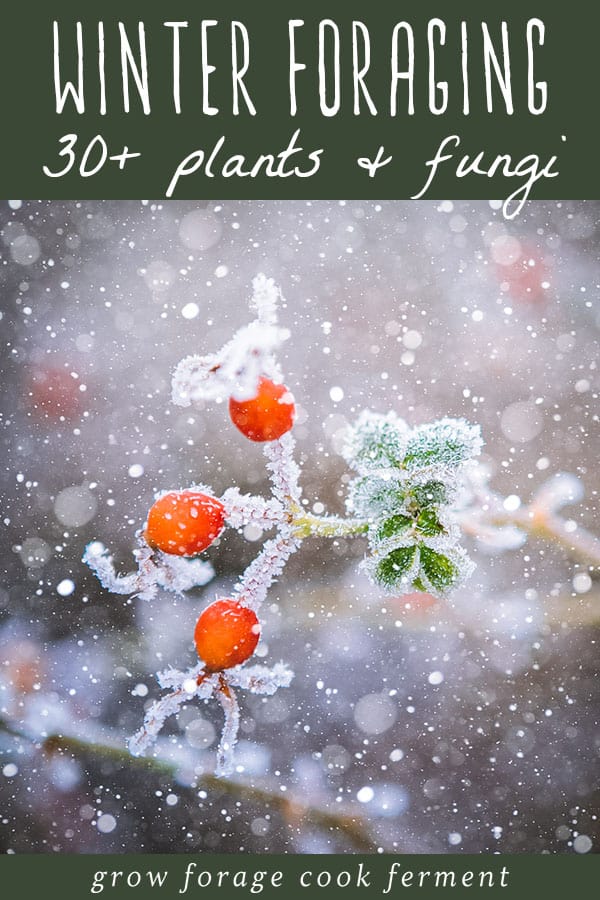
Want to save this post for later?
Wildcrafting Weeds
If you want to learn more about the edible and medicinal weeds that surround us and how to use them, check out my eBook: Wildcrafting Weeds: 20 Easy to Forage Edible and Medicinal Plants (that might be growing in your backyard)!
Winter Foraging: Edible and Medicinal Plants and Fungi
Foraging in winter is not always easy, and it gets even harder the further north or higher in elevation that you are.
The super cold temperatures, low light, and heavy snow cover in these areas can really make it difficult for anything to persist and survive through winter.
There are a few wild plants that are usually reliable for winter foraging, even in the harshest conditions. If you are in a more moderate or warmer zone, your options are expanded, sometimes by a lot!
One thing to remember, especially if you are in the harshest weather zones, is to leave most of what you may find for the wildlife. They are likely going to need it more than you will!
That’s not to say that you can’t enjoy a cup of pine needle or birch bark tea from time to time, but it’s good to be aware of the cycle of life and how we play a part in it.
Trees
Trees and their needles, cones, branches, bark, and sap are the classic winter foraging food. They are available to practically everyone and in almost any climate.
Conifer Needles – The needles of evergreen conifers are probably the easiest and most widespread thing to forage in winter, even in the coldest climates. Most conifers are edible, with the exception of the yew tree, which is toxic. Read my guide on identifying conifer trees for more information.
Try pine, spruce, fir, redwood, or hemlock (the conifer, not the toxic herbaceous annual plant). The needles make a lovely tea, or you can even make conifer needle cookies, conifer infused oil, or boozy conifer infusions like conifer infused vodka or a conifer hot toddy.
Related: 30+ Conifer Needle Recipes: Drinks, Desserts, Syrups, Balms and more!
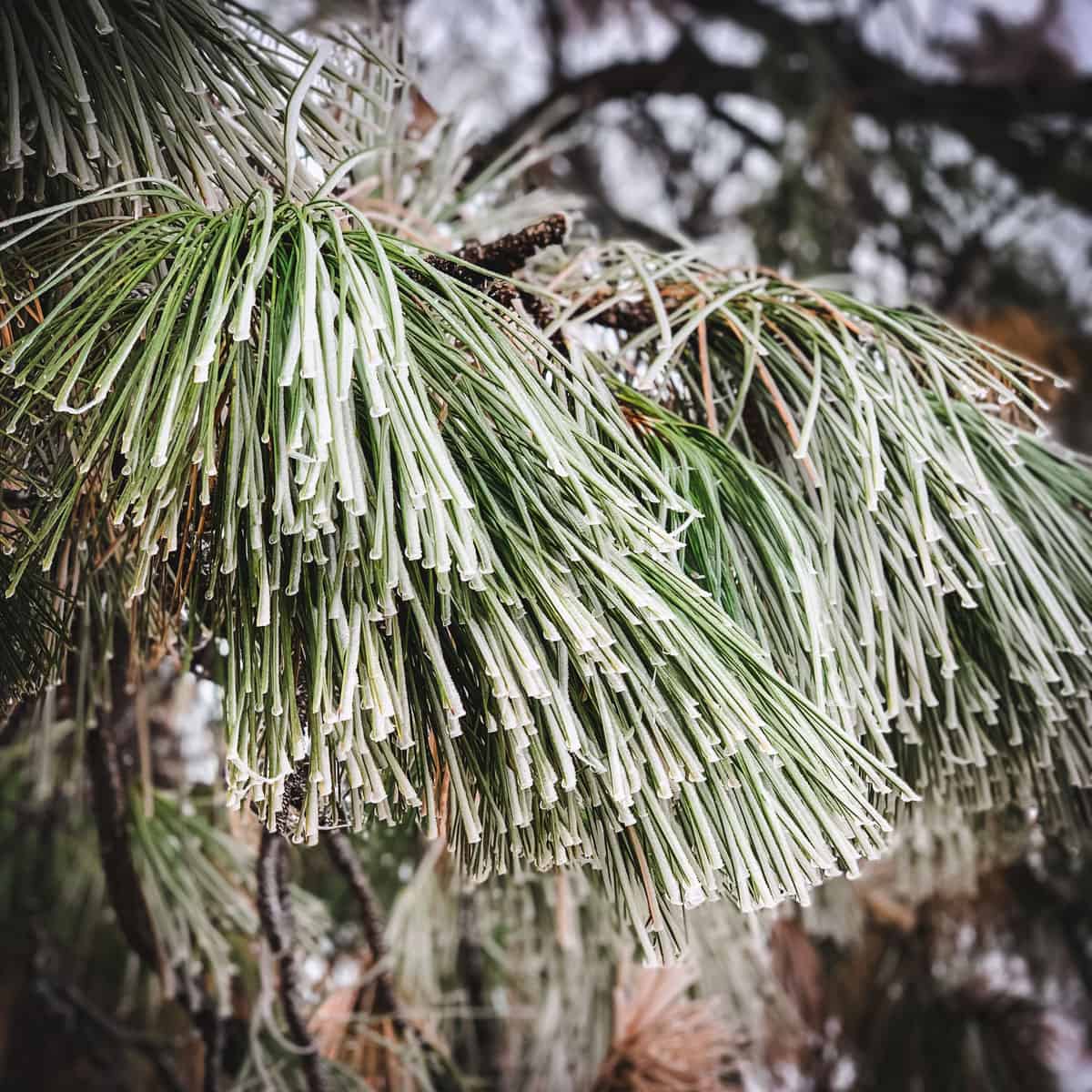
Juniper Berries – Juniper berries aren’t even really berries at all, which is why I have them here instead of in the section on berries below. They are actually a fleshy pine cone with a distinctive scent and flavor. They are most commonly used as a spice rather than a food, and they are the main flavoring agent for gin. Collect some and make your own homemade infused winter gin! They can also be made into a medicinal tea, or used to make a wild yeast starter for fermenting.
Birch Bark and Branches – Birch trees are another one that can be foraged in colder regions. The bark and small twigs and branches can be made into a tea. The inner bark can also be made into a flour substitute. Don’t take too much of the bark from one tree as it can be harmful to the growth of the tree.
Tree Sap – Beyond maples, many trees can be tapped for sap, even black walnut trees! This is something that is usually done towards the end of winter, as temperatures are just barely starting to get warmer, but the exact timing is dependent on your location. Birch trees are tapped earlier than most, often in late winter, and you can even ferment the birch sap into wine!
Related: How to Tap Trees and Make Syrup in Your Backyard
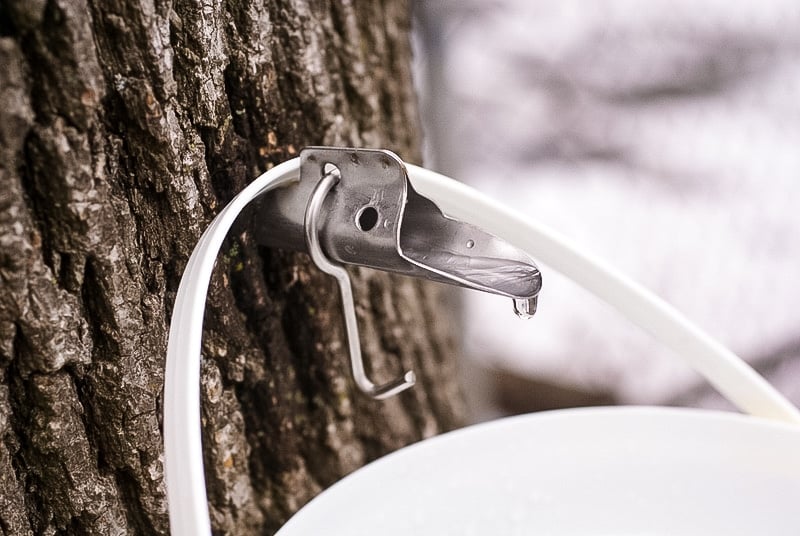
Nuts & Seeds
There are many nuts and seeds that can hang on through winter, as long as the other animals haven’t stored them all before you get to them!
Acorns – The nuts of oak trees, acorns (along with most other nuts) come into season in the fall, but you may still be able to find some in the winter if the squirrels haven’t gotten to them first. Acorns require a bit of processing first to make them edible, but the resulting flour is supposed to taste wonderful.
Maple Tree Seeds – I only recently learned about the little helicopter seeds from maples being edible. They may be a bit dried up and not taste so great in the winter, but they are often still hanging around.
Dock Seeds – Curly dock and yellow dock are common leafy weeds that are foraged in spring and summer for their greens. In late summer they shoot up a large stalk that will eventually be covered in seeds in fall. Once winter comes, the plant will die back, leaving the dried seed stalk. I’ve heard it’s kind of a pain to forage dock seeds and do much with them, but they can be made into a flour. This recipe for curly dock seed crackers sounds pretty tasty!
Berries
While berries won’t typically grow during the winter, there are some that will continue to hang on through ice and snow. Once they freeze they will usually get mushy, but can still be used for jams, syrups, or sauces.
Rose Hips – Rose hips are the fruit of the rose flower, and can be found in the wild or in cultivation. They appear in the fall, but around our area they will persist through most of the winter, often covered in snow or ice. They are high in vitamin C, and make a lovely tea, jelly, or delicious rose hip syrup. I made a rose hip whiskey smash drink last year that was fabulous. They can also be used medicinally in a rose hip facial serum!
Related: 60+ Rose Hip Recipes for Food, Health and Beauty
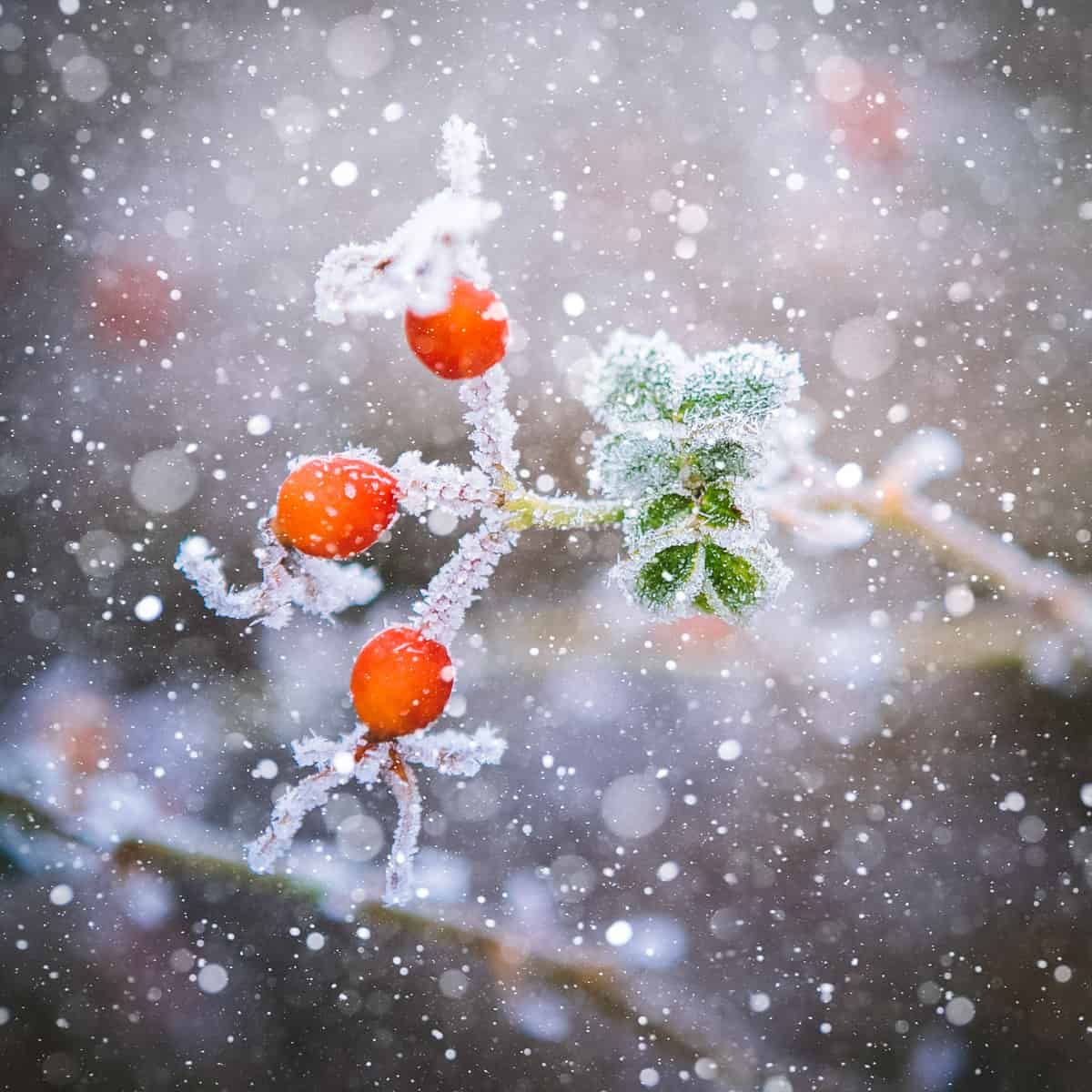
Hawthorn Berries – There are many types of hawthorn berries, and they also persist into wintertime. Not all varieties taste great, but none are poisonous, except for the seeds. Don’t eat the seeds! They are high in pectin and make a wonderful hawthorn jelly or jam.
Cranberries – Wild cranberries are native to the Northeastern and upper Midwestern states and Eastern Canada, and are a popular berry for winter foraging. They handle freezes well and will last through most of the winter. I would love to be able to collect wild cranberries to use in my fermented honey cranberries recipe or in a batch of homemade cranberry sauce.
Wintergreen (Teaberry or Checkerberry) – Teaberries, also called checkerberries, are the berries of the wintergreen plant. They will over winter and will often still be on the plant when the snow melts in the spring. The leaves of wintergreen are also edible and can chewed on or made into a tea.
Leaves & Flowers
There are a few evergreen leaves that can be found even in the harshest conditions. If you live in a more mild climate, some of the more cold hardy tender greens and flowers can be found all through the winter.
Uva Ursi (Bearberry or Kinnikinnick) – Uva Ursi is common in the Western states, and is highly medicinal, particularly for urinary tract infections. It does produce berries, but they aren’t super tasty, so is more commonly used for its leaves. It’s a low growing relative to manzanita, and looks somewhat similar. In winter it can be found under the snow, if you are willing to dig for it!
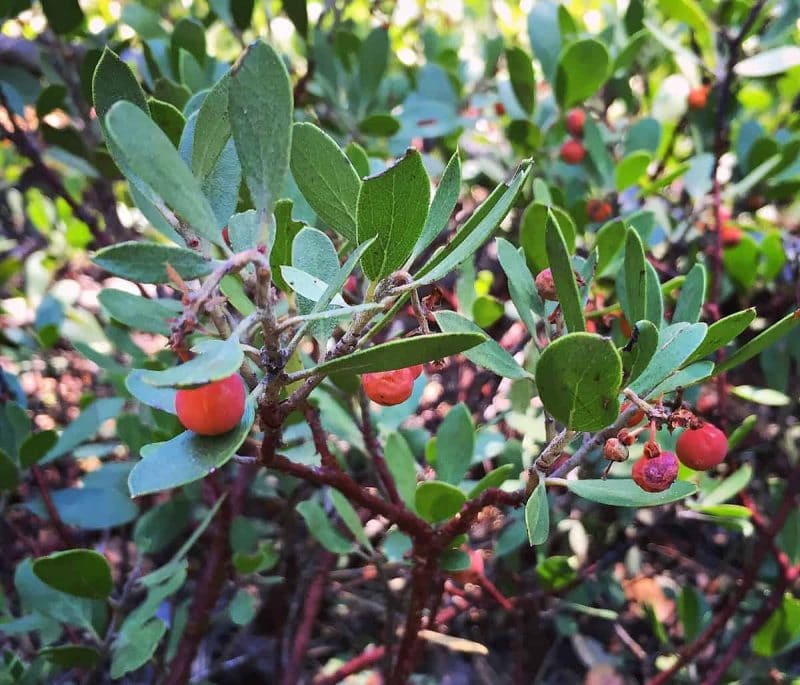
Watercress – This water plant loves cold water and will often grow all winter long. Watercress is a peppery tasting green that is lovely in salads or any other way that you would use leafy greens.
Early Spring Greens and Flowers – I include these because in mild climates they will grow right through the winter: dandelion, chickweed, yarrow, dead nettle, miner’s lettuce, and wild violet. We are a little too cold here for them to grow all winter, but usually, by late January or early February, they will start to show up.
Roots & Shoots
Roots are a common winter foraging food, but only when the ground isn’t totally frozen solid. They are important to know about, though, because they can provide good calories when needed.
Shoots are typically found in late winter as the temperatures gradually start to become warmer.
Oregon Grape – While there probably won’t be any berries left on Oregon grape plants in the winter, the inner bark of the stems and roots is highly medicinal. It contains berberine, the same compound that’s in goldenseal, which is great for the immune system, as well as being antibacterial and anti-inflammatory. Note that Oregon grape is at risk for being over-harvested and is on the plants to watch list.
Cattail – If you know where a stand of cattails is, you might be able to dig up the edible roots in the winter. In late winter you also may find the first shoots that are starting to come up, and those are supposed to be really tasty!
Burdock – Burdock is a thistle that has a edible and tasty root. In fact, there are many types of thistles that have edible roots that you might be able to dig up, as long as the ground isn’t totally frozen solid.
Jerusalem Artichoke – These knobby tubers actually get sweeter and more digestible after a couple of good frosts. They are most often grown in gardens, but also naturalize very easily and can often be found in disturbed areas.
Chicory – Chicory grows almost everywhere and the root can be harvested all through the winter (once again, if your ground isn’t completely frozen solid). It makes a nice coffee substitute if you’re in need of a hot drink, and this chicory mocha will do the trick!
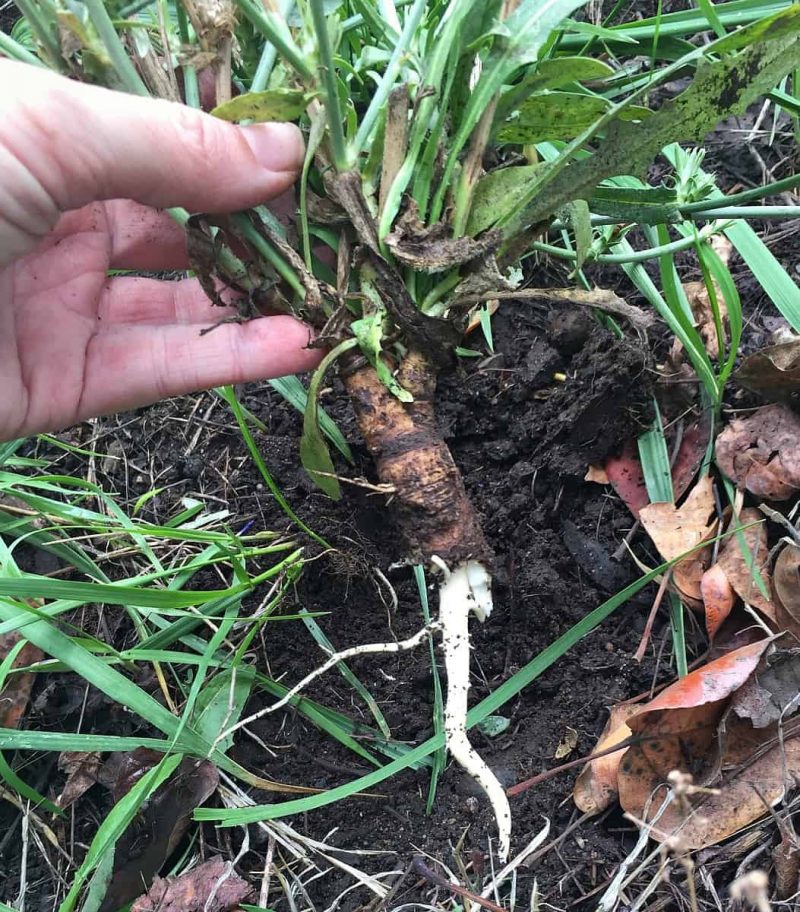
Dandelion – Dandelion root can also be collected through the winter if the ground isn’t too frozen or covered with snow. It is a highly medicinal bitter herb that can be used to make a coffee substitute or your own homemade bitters. If you find both dandelion and chicory root you can make this dandelion and chicory chai!
Related: 50+ Dandelion Recipes: Drinks, Sweets, Soap, Remedies and more!
Lichens
Lichens are traditionally only thought of as “survival food” because they require some processing before being edible, but some of them do have medicinal properties.
Old Man’s Beard (Usnea) – Usnea is a lichen (some may think of it as moss, but it’s actually a lichen) that hangs in long strands from trees. It is very common in the forests of the Pacific Northwest, and I see it everywhere!
Usnea takes a really long time to grow, so it’s important to only gather what has fallen to the forest floor, rather than taking it from the tree itself. It has medicinal properties and is great made into a tincture.
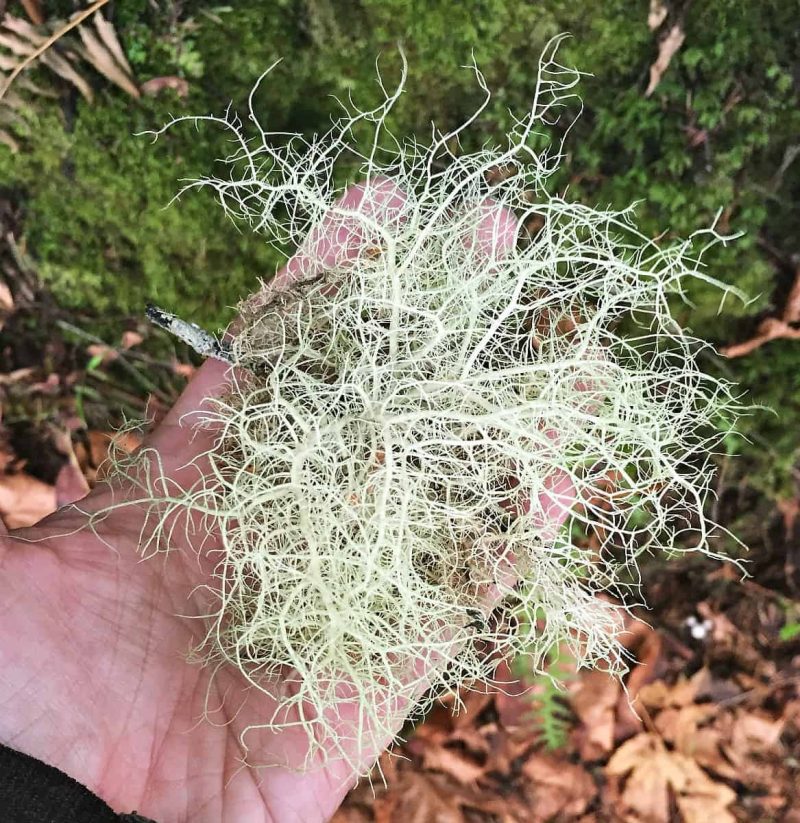
Reindeer Moss – Another lichen, reindeer moss also grows on trees and is edible with proper preparation. It’s not to be eaten raw, however, as it will cause some digestive upset.
Mushrooms
There are many edible mushrooms that can be foraged during the winter, especially ones that grow on trees above the snowline. While some won’t tolerate hard frosts, there are some that will. Here are a few of my favorites.
Yellowfoot Chantrelles – Also called winter chanterelles, these tasty mushrooms in the chanterelle family can be found through most of the winter. They have the same false gills as chanterelles, but a hollow stem. I’m probably going to go out looking for some soon!
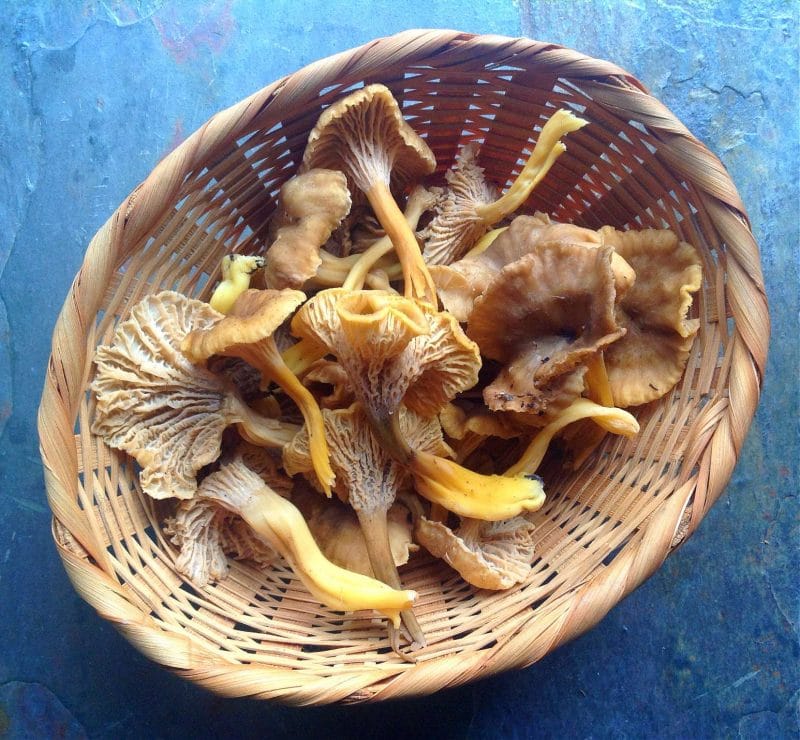
Oyster Mushrooms – Oyster mushrooms grow on downed logs or standing dead wood, and can often be found year round. They won’t tolerate a hard freeze, but I have found them in the middle of winter around here.
Chaga Fungus – It seems that chaga fungus is all the rage right now with its powerful medicinal properties. It grows as a large knobby looking thing, usually on birch trees. Great care is required when harvesting to ensure that it will come back year after year, as it is a very slow grower.
Turkey Tail Mushroom – This medicinal mushroom also grows on trees through the winter, making it great to forage in the colder months. Turkey tail mushrooms are most often made into a tea and they are great for the immune system.
Related: 5 Easy to Identify Edible Mushrooms
Seaweed
If you live near coastal regions, seaweed is the perfect food to forage any time of year! All seaweeds are edible, but some are definitely more tasty than others.
Dulse – This reddish colored seaweed is one of the most common and tastiest. It is found on rocky shorelines in many places of the world.
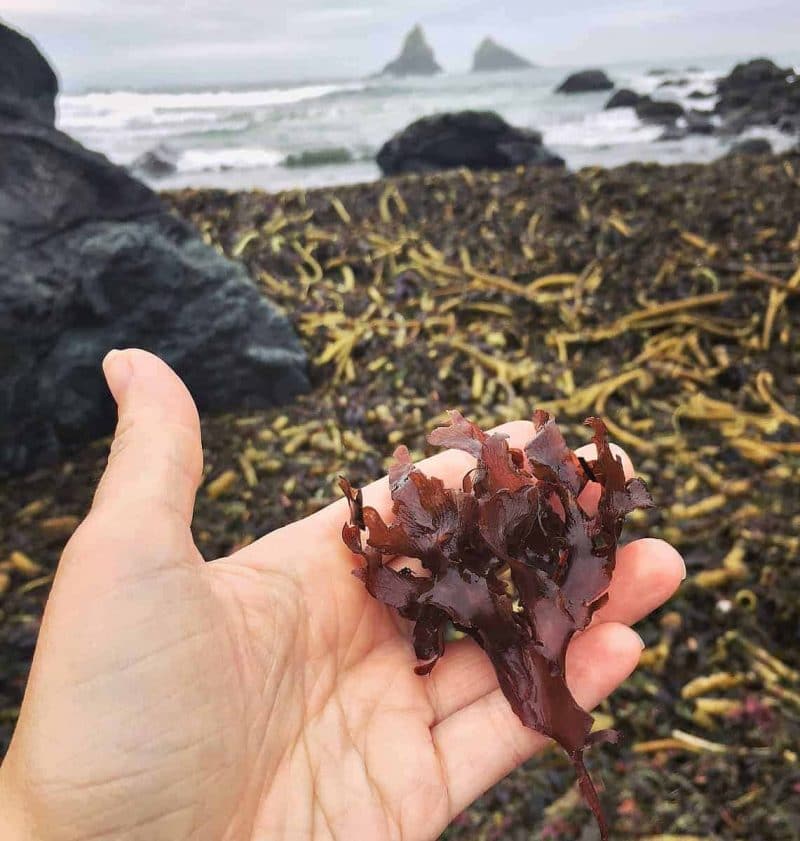
Kelp – There are several varieties of kelp, all of which are edible. Sugar kelp and forest kelp are both common and are perfect for adding to soups and stews to increase mineral content.
I hope this post will help you with learning what to forage in winter! It was actually surprising to me all the winter foraging options that there are. The most important part is to keep your eyes on the lookout to whatever you might find!
Have you ever foraged in the winter? What have you found?

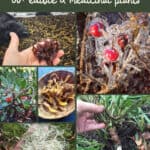
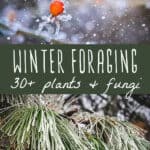

You missed the best of all when winter is really winter. Snow Cream!
Could you expand on this in the future? You broke it down in a simple way. Looking forward to more posts like this.
We call usnea “tree beard”. In 2019, my husband and daughter had a respiratory issue and I was going thru the different herbs to use in my head. As we pulled up to our gate, there, hanging on the gate, was a large piece of usnea! I thanked God for His divine message and we made a unsea tincture that helped to kick the respiratory problem to the curb.
Oregon grape grows abundantly and I am guessing that it is the commercial harvesters that are over harvesting, or purchasing their supply from unethical people. People have been robbed of their huckleberry harvest in the forest near where I live. We also get people who do not even live in their area going in and completely stripping the bushes. It is absolutely disgusting.
I would suggest being careful with Juniper as some variants are poisonous. and im not sure how good this advice is but I read somewhere “Watch the birds, eat what they eat” though I’m sure there’s exceptions to this.
Like berries of the Holly tree, they’re toxic but pigeons love it!
Birds can digest arsenic in berries and we cannot so don’t depend on birds to point out edible berries for human beings at all! Watch deer and bear instead as they are mammals same as we are.
Thank you for the delightful winter foraging article. My harsh climate will let me leave it for the animals! However, I can forage in my home in the winter by sprouting seeds, by growing a pot of radishes, but I use the healthy greens, along witb other pots of herbs: all under plant lights! I love winter!!
Colleen you are a wonderful inspiration and I look forward to reading and learning from your posts.
I love to forage and grow my own herbs. Peace & love
Thank you. I’m glad you’re enjoying my posts!
When harvesting any bark, it is not just the amount of bark that is an issue. You do not want to girdle the tree, which means, do not strip a ring around the tree. This will kill it.
How about Greenbriar roots, Rush roots and kudzu root. They are available here in zone 7 in the winter.
I really enjoy this post! I love to get into the forest, at all times of the year, but am especially looking forward to doing some winter foraging!
Tree ear mushrooms can be found on dead branches, hickory nuts, native persimmons may still have some dried fruits hanging on and if you’re finding chickweed, then there may also be wild sorrel around. Also, look for sumac berry clusters to add a lemony tang to food or drinks.
We have so many highbush cranberry bushes. We planted about 24. I made jelly once, did not go over well.
Me and my toddlers really enjoy fermented cranberry sauce. I can’t get my husband to try anything fermented.
Very interesting and well written article. I enjoy all your tips.
I recently tried juniper berries in a new sauerkraut combo and boy, do they pack a wonderful spicy flavor! I can see why they go well with ferments and are ideal for consumption in winter months!
Great post. This is a hard time of year to find food outdoors.
Great list! It’s so exciting to keep going out and finding things, even when everything appears to be dead and gone!